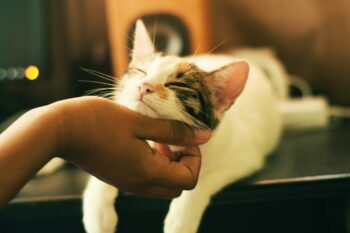A common misconception about cats is that they’ll eventually shred everything in your home. Nothing’s off-limits — sofas, tables, woodworking, carpeting and even your draperies. But the reality behind felines and their “destructive” clawing isn’t so simple. Kitty isn’t intentionally trying to upset you or destroy your lovely home. She’s simply performing an instinctive behavior. And, with correct guidance and proper equipment made especially to satisfy those cat-scratching urges, you can modify redirect that urge to scratch.
Cats need to scratch for various reasons. Felines must shed the sheaths of their claws so they can grow new ones. Also, they mark their territory by using scent glands on their paw pads — done by scratching objects. Cats scratch for exercise, too, stretching their legs, feet and spine.
A variety of enticing scratching paraphernalia is available, such as vertical, horizontal and even angled posts, trees and pads. Condos (manufactured in colors to match any home décor) with several scratching surfaces, such as different textures of carpet, wooden posts and sisal rope, are especially appealing to cats. Some cats like to scratch both horizontally and vertically, so offering a scratching assortment is sure to please your puss.
The platforms on your cat trees and condos should be large enough and sturdy enough so they won’t tip while kitty climbs and scratches. The different levels and perches should be staggered, creating a stair-step effect for those felines, such as elderly or arthritic cats, who aren’t so agile anymore. Scratching posts need to be tall enough for your cat to stand on her hind legs, anchor her claws in the post, and get a good stretch.
Placement is crucial, as well. Be sure to keep a post close to your cat’s favorite sleeping spots, because she loves to stretch out and sharpen her claws as soon as she awakens from her catnap (however many times per day that may be). If there is a particular piece of furniture your cat finds irresistible, put a post in front of that spot to block her from scratching it and, once she discovers her own scratcher, slowly move to its permanent place (this may take several days). But the permanent place can’t be the basement — a scratching post is also a territory marker, and no self-respecting cat will want to mark undesirable territory.
Rubbing catnip on the posts will definitely help attract kitty. You should also encourage your cat to play at the scratching post. You may need to dangle toys around the post or manually put kitty’s paws on the post and gently show her the scratching motion.
If your cat starts scratching your sofa, simply distract her and lead her over to her own enticing post. Once your cat learns that the scratching posts are her property to use as she sees fit, your furnishings, as well as your patience, will remain intact.







